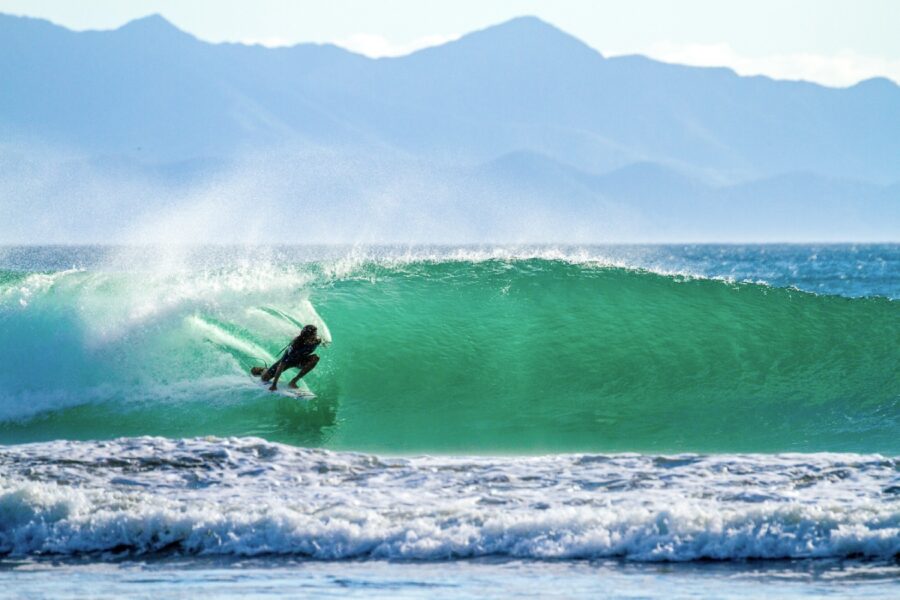
With 300+ days per year of offshore winds, fewer crowds than its neighbor to the south (Costa Rica), and consistent waves year-round, Nicaragua should be high on your list of surf trip destinations.
In this guide to surfing Nicaragua, we’ll give you the lowdown on everything you need to know to plan your trip—from the best waves and luxury accommodations to culinary highlights, local experiences, and insider tips on when to visit.
We’ll walk you through the best seasons to visit and what to expect so you can plan the perfect trip. Whether you’re envisioning days filled with uncrowded point breaks or relaxing with a handcrafted cocktail after an epic session, Nicaragua delivers on every front.
If you’re interested in checking out Nicaragua’s southern neighbor, check out this Guide to Surfing Costa Rica.
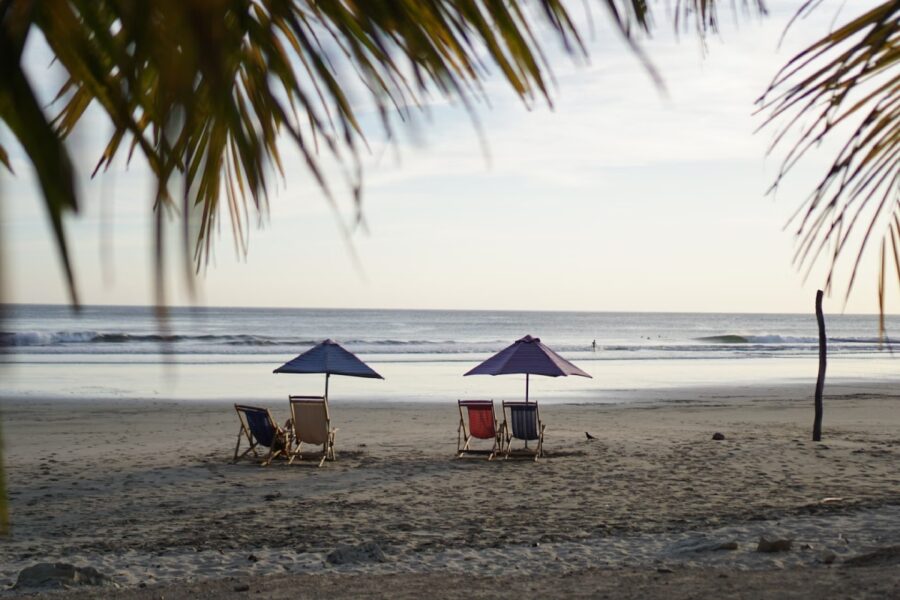
Want to Have the Best Surf Trip to Nicaragua?
We specialize in custom luxury surf trips to Nicaragua, tailored to your surf level and preferences. Enjoy an expertly planned surf vacation with insider surf intel, the best local surf coaches, stunning villas, private chefs, and more. Learn more.
Surfing Nicaragua
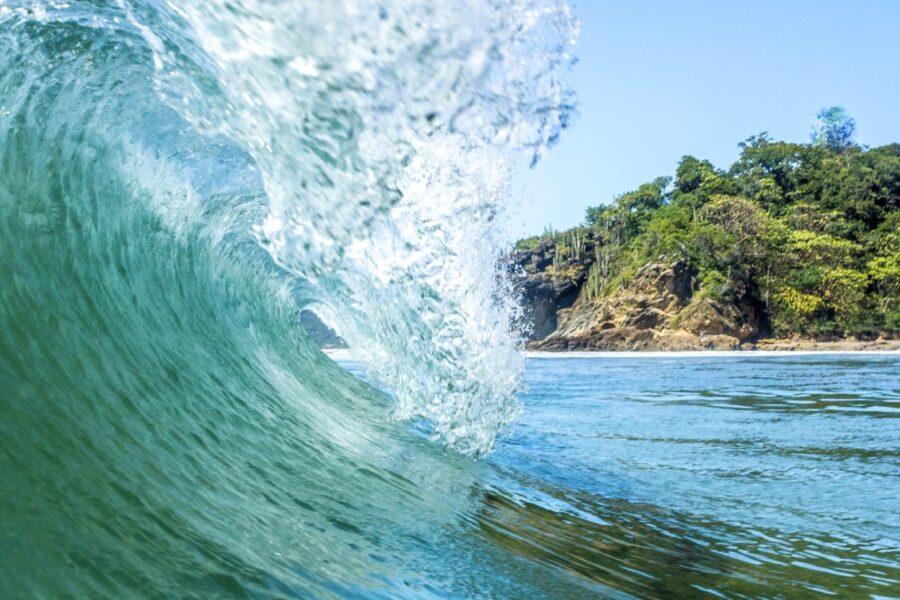
Nicaragua has more than 250 km of coastline on the Pacific Ocean. There are two main seasons: the green or wet season (which is also the low season) and the dry or hot season (which is the high season). The green season stretches from about mid-May through mid-November, which is when the Pacific coast gets hit with the biggest swells and most consistent surf. It goes without saying that this is a great time to consider a surf trip to Nicaragua.
Where to Surf in Nicaragua
Nicaragua has a number of different surf zones, all of which provide great waves, relaxed vibes, and a vibrant culture. The southern region is dominated by the Popoyo zone, which is arguably the country’s main surf hub. With tons of accommodation options and access to two of Nicaragua’s most famous waves (the outer reef at Popoyo and the legendary beach break peaks at Playa Colorado, which is 30 minutes south of Popoyo, near El Gigante), this area is a no-brainer for any visiting surfer. The fact that it enjoys daily offshore winds caused by Lake Managua is an added bonus.
Further south, San Juan del Sur is the country’s other main surf zone, with numerous popular options, such as Playa Maderas and Playa Majagual. This area also enjoys all-day offshores due to its proximity to Lake Managua.
Up north near Leon and Chinandega lie the hollow beach break peaks of the Boom and the shallow left-hand reef point appropriately called Meatgrinders. While this area doesn’t enjoy the all-day offshores that the southern coast gets, it tends to be less crowded.
Regardless of where you go, Nicaragua is full of quality head-high+ reefs, points, and beach breaks with a fraction of the crowds down in nearby Costa Rica.
Surf Seasons and Swell Info
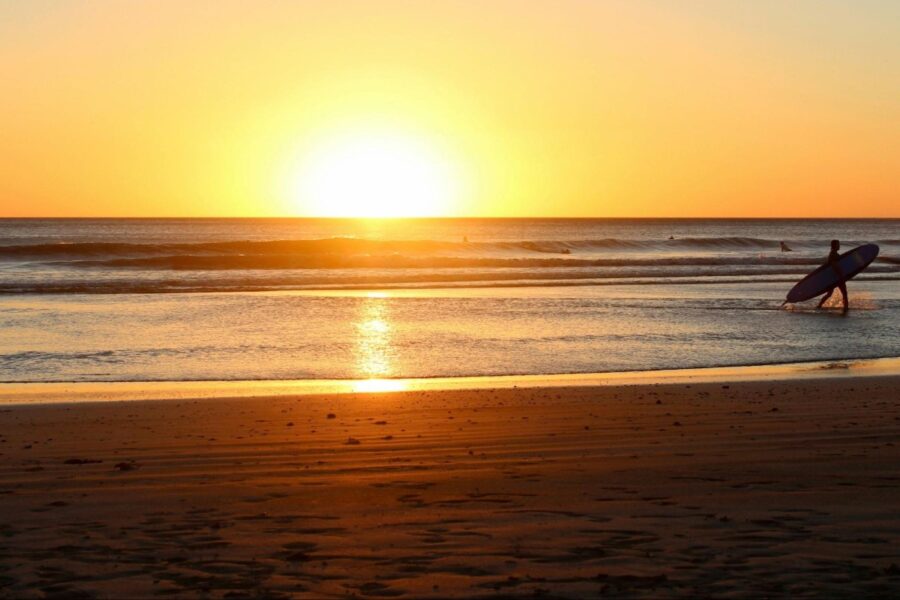
When it rains in southern Nicaragua, the precipitation is often light and sporadic and tends to pass through fairly quickly. Sometimes it only rains overnight (which is always welcome). September and October are the peak of the wet season, when heavy rains can result in all-day downpours at times. However, during these months, everything is incredibly lush and green, there are fewer people, and, while the surf is smaller, you can still score glassy head-high perfection with little to no competition.
January and February experience the strongest winds and upwelling, which causes the water to be colder than normal. The waves tend to be the smallest this time of year, making it an ideal time for beginning surfers.
If you visit during April, it is important to plan your trip around Semana Santa (Holy Week). This is the week leading up to Easter (Thurs-Sun), and should be avoided if you’re looking for uncrowded beaches and lineups. Thousands of Nicaraguans take this week off and flock to the beaches for vacation, which is sure to increase the crowd factor.
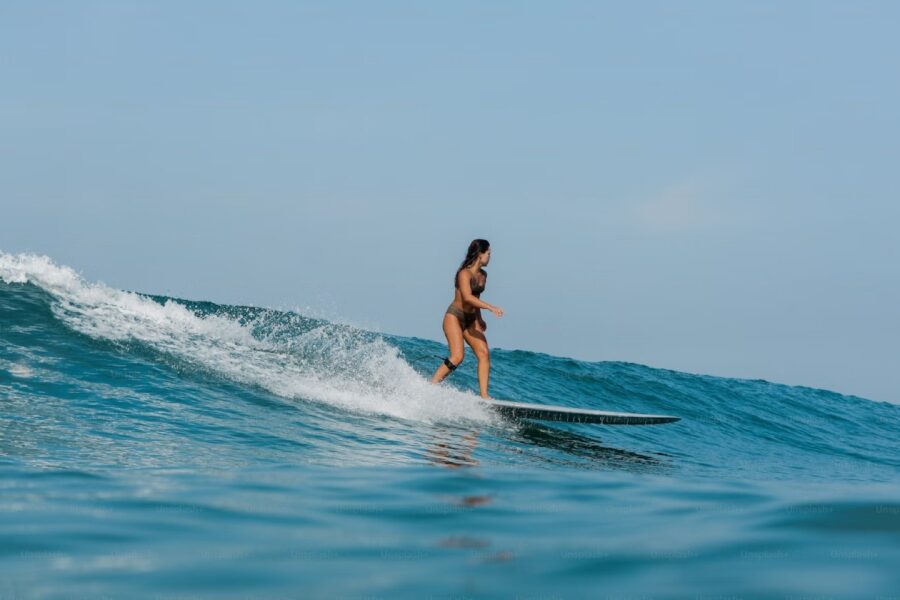
April through September is prime time for experienced surfers. This period sees fewer tourists and a vibrant, tropical landscape. Most importantly, consistent south swells are frequent, delivering overhead waves that range from excellent to truly epic.
Late November is the start of the dry season, which runs through March and can be a great time for surfers looking for mellower surf and clean conditions. The dry season tends to be the high season for tourism in tropical destinations like Central America, but is technically the low season when it comes to swell.

Types of Surf Breaks
Nicaragua has a wide range of surf breaks on offer, ranging from outer reefs and cobblestone points to endless beach breaks, many of which are hollow and punchy. Most swells are around head-high to overhead during the high season, while offseason swells range from ankle to chest high.
Level of Difficulty
While there are advanced and expert waves in Nicaragua (such as Playa Colorado and Outer Reef Popoyo, respectively), most of the waves in the country are in the intermediate range. There are also a number of beginner waves for those who are still learning to surf.
Crowds
Many of the waves in Nicaragua are decently crowded, with a mix of local and visiting surfers. However, there are a number of lesser-known waves (particularly up north) that are empty most of the time. And even at the most populated spots, crowds are generally much lighter than down in neighboring Costa Rica.
Water Temperature
The water in Nicaragua remains pretty warm all year round, although it does tend to dip a bit during the northern hemisphere winter, when upwelling brings colder water up from the depths (peaking in February). That being said, average water temps range from 80 to 84 F. (27 to 29 C.), while air temps range from 70 to 91 F. (21 to 33 C.).
Getting to the Surf
Virtually everyone surfing Nicaragua flies into Managua (although it is technically possible to drive into the country from neighboring nations). Once in the capital city, the two best options are to rent a car (if you plan to explore multiple regions and waves) or take a private transfer to your accommodations (if you plan to base in one area with a number of nearby waves). While most waves are accessible by driving or walking, there are a few that are best accessed by boat, which can make for a fun day trip.
Boat Trips

A boat trip (or three) is an essential part of any Nicaraguan surf adventure, so be sure to fit some in. There are so many great breaks to explore and depending on the swell and your luck you may want to stop to check a few before getting on it – a boat is the best way to do this. Also, anytime you go on a boat trip, you gain the added benefit of tapping into the captain’s local wave knowledge, which is always a good thing.
Half-day and full-day trips are available depending on how much time you want to spend on the water. Depending on where you stay, you may even have access to exclusive charters that offer a more personalized experience, with options for refreshments, shaded seating, and top-tier service to make the journey just as enjoyable as the destination.
Top Surf Spots in Nicaragua

Playa Colorado is a punchy, often hollow beach break with many faces. Found in the southern Pacific region. It ranges from rippable at shoulder-high to hollow double overhead stand up barrels. Colorado is a pretty heavy break when it’s on, so be prepared to get slammed and be sure to bring an extra board (or two).
Panga Drops is a 15-minute walk up the beach from Colorado and similar in power and shape. This break is a favorite among those seeking a more spacious lineup and a chance to score bigger waves in a stunning, uncrowded setting.
Playgrounds is exactly that—a playground for surfers. Offering both rights and lefts, it’s a super fun, rippable wave breaking over a cobblestone seafloor. Watch out for urchins. If you’re surfing Playgrounds, you most likely got there by boat. It’s not commonly accessed by the beach, as there isn’t much around.
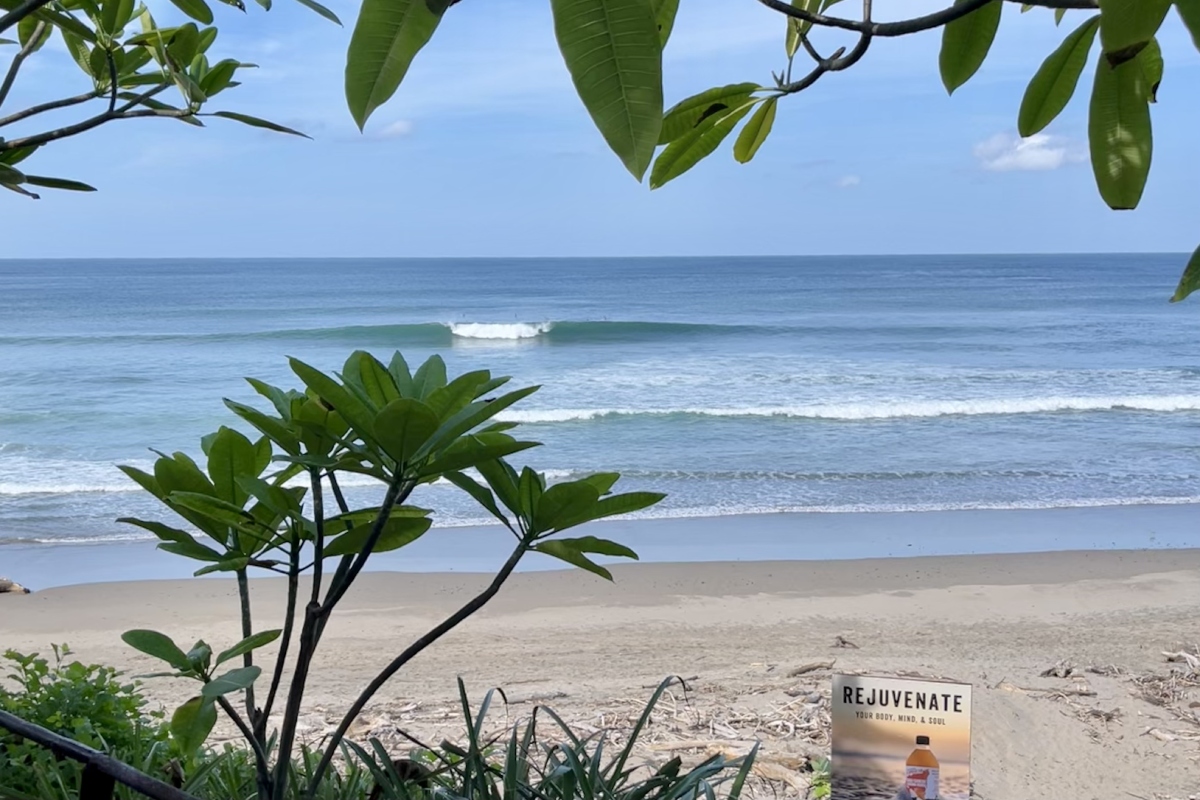
Popoyo is one of the most well-known spots in Nicaragua. Some have compared it to Lower Trestles, but it’s a better left than it is a right and has a rocky reef bottom as opposed to cobblestone. Either way, it is an epic wave that will let you lay down your best carves. If there is enough size, the outer reef is the heaviest barrel in the country.

Playa Santana is a long beach with a few spread-out peaks. The main break is a left-hand wedge that dishes out some very throaty barrels. The beach breaks have a variety of fun peaks, but can also close out from time to time. Playa Santana is a very popular beach among locals, who often hold surf contests there. AIt is always best to respect the locals wherever your travels take you.
Playa Maderas is one of the most popular breaks near the San Juan Del Sur area. Maderas is predominantly a beach break, and tends to break all year round. It’s an all-around great wave that is very rippable.
Manzanillo is one of the better waves in the country when it’s working, and also one of the most beautiful. That being said, it’s a rather fickle break that needs a certain swell direction to work. Manzanillo is a left-hand point break that peels along a picturesque cliff background. There are some barrel sections to be had, as well as wide-open faces to be hacked. Most commonly accessed by boat, this spot is a bucket list for many surfers visiting Nicaragua.
Where to Stay
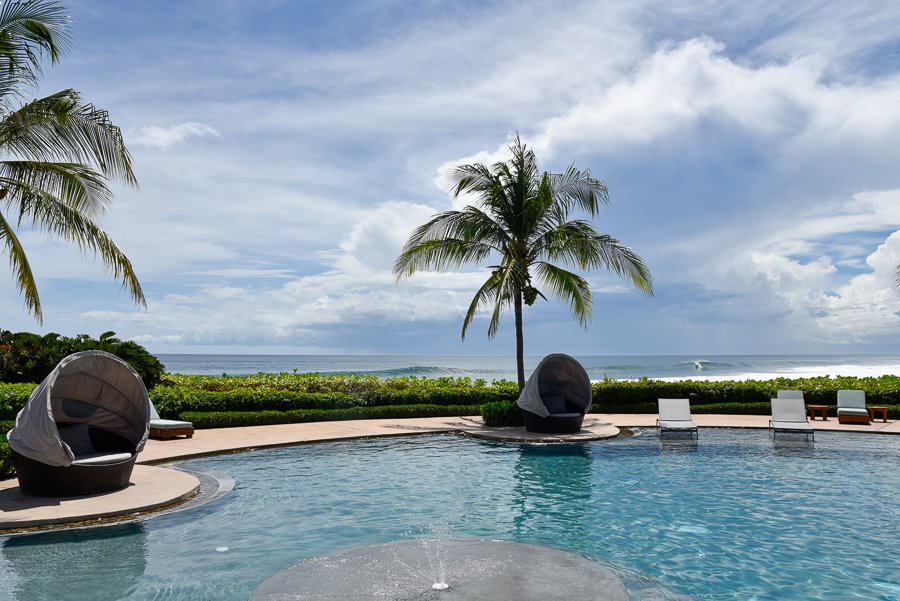
When it comes to finding the perfect place to stay, Nicaragua offers a variety of exceptional options. From chic eco-resorts and stylish beachfront villas to boutique hotels with personalized service, there’s something for every traveler seeking comfort and quality. Whether you prefer a serene private villa steps from the sand or an upscale resort with plentiful amenities, you’ll find accommodations designed to elevate your experience and immerse you in the natural beauty of the coast.
For those traveling with a group or family, renting a private villa is an excellent option. You’ll enjoy beautiful surroundings with extra space and privacy, often at a similar price to a boutique hotel. Nicaragua has some stunning surf villas on offer, perfect for creating unforgettable surf adventures with your closest crew.
It’s important to note that certain times of the year (particularly the Christmas and New Year holidays) can get booked out very quickly. To ensure you have the best selection and availability, we highly recommend booking as early as possible.
Below is just a sampling of the many beautiful properties we have available for your surf vacation in Nicaragua. We hand-pick properties based on design, amenities, and proximity to surf breaks.
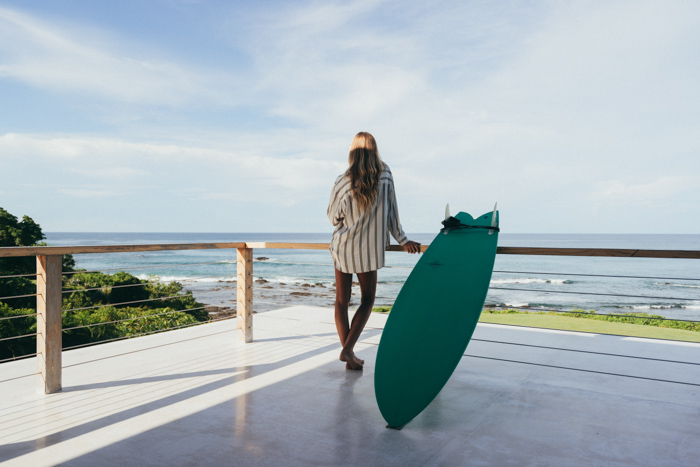
Epic surf trips made easy.
Explore luxury done-for-you surf vacations with Lush Palm Private Retreats.
Want to experience the best of Nicaragua without the hassle of planning? We specialize in unforgettable Nicaragua surf trips, available in two ways:
- Tailor-Made Luxury Surf Trips are tailored to your surf level and preferences. Enjoy a 5-star surf vacation with insider surf intel, the best local surf coaches, stunning oceanfront villas, talented private chefs, surf photography, and more.
- Ready-to-Book Nicaragua Surf Trips are premium, ready-to-book experiences designed to give you the best surf trip—effortlessly. Whether you’re going solo, with your partner, a group of friends, or the whole family, this all-in-one package includes everything you need for a next-level surf getaway.
Want to Have the Best Surf Trip to Nicaragua?
We create unforgettable surf trips in Nicaragua, crafted with local know-how and surf expertise. Go custom with our Tailor-Made Surf Trips designed for your style and crew, or jump right in with one of our expertly curated Ready-to-Book Nicaragua Surf Trips.
Nicaragua Travel Basics
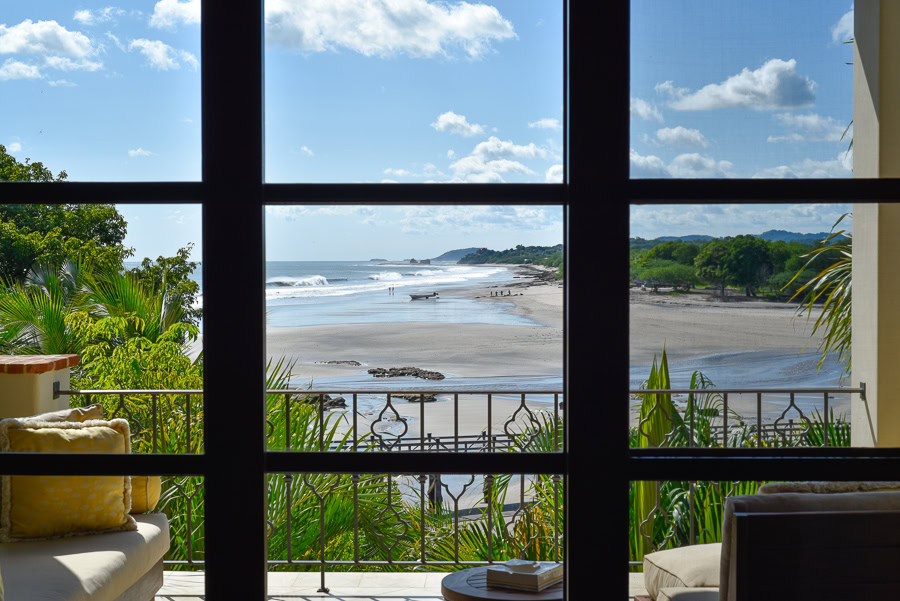
Seasons & Weather
April through September is high season for swell but low season for non-surfing tourists (on account of this being the wet season). Rain is common and can sometimes last all day, but is usually only sporadic and short-lived. Water and air temps range from warm to hot, south swells are common, and the waves are pumping!
October through March is the opposite (in some ways). Swells are smaller, the weather is dry, there are more non-surfing tourists in the country, and the water temperature cools slightly. That being said, it’s still tropical and beautiful (albeit less green), and the offshore winds from Lake Managua continue to blow, even during the “offseason.”
Currency
The local currency is the Nicaraguan cordoba, which trades for around 37 per dollar. While many resorts and high-end facilities accept credit cards, it is a good idea to pull out a decent amount of cash to cover tips and those businesses that don’t accept cards.
Staying Connected
Most hotels, resorts, and rental villas will have Wi-Fi available. The country also has a decent mobile network operated by Claro and Tigo (the two main communications companies). If your mobile service provider doesn’t offer international coverage, you can pick up an eSim when you arrive in Managua.
Language
Spanish is the most commonly spoken language in Nicaragua. Some people in heavily touristed areas will speak a bit of English, but expect most communication with locals to be in Spanish.
Good to Know
The Nicaraguan people are renowned for being friendly and welcoming, but it is important to treat the local surfers with respect. Many of their home breaks have become crowded by tourists, but that doesn’t mean the locals aren’t excellent surfers in their own right. They are also proud of their waves and country, so while they are friendly, it is a good idea to tread lightly and be respectful—as we should all do whenever we travel.
In addition, while violent crime is relatively rare in Nicaragua, it is a good idea to lock up valuables and keep an eye out for petty theft in large urban areas such as Managua, particularly at night.
Eat & Drink
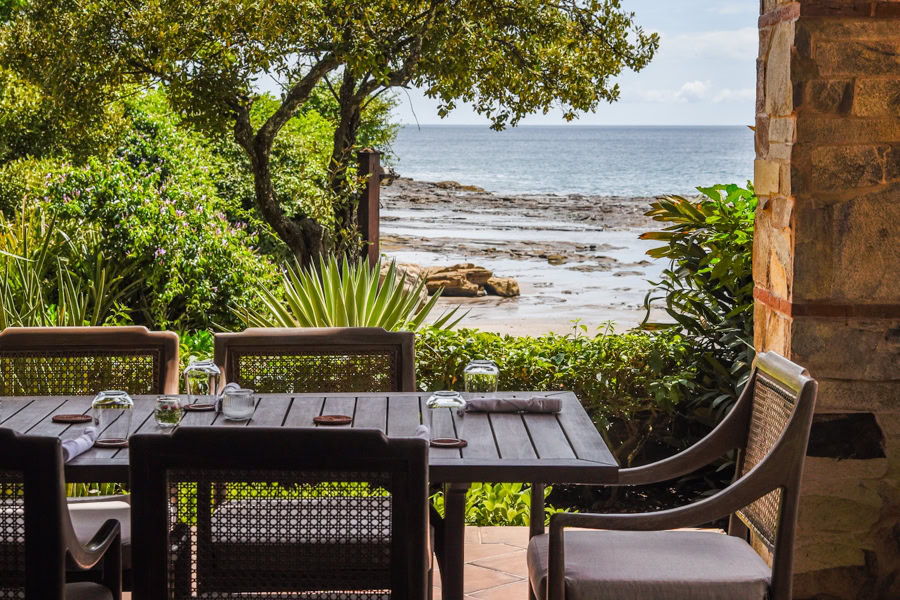
The dining scene in Nicaragua has flourished in recent years, offering an impressive variety of options to suit every craving. Whether you’re in the mood for fresh seafood at a chic beachfront restaurant, wood-fired pizza, or handmade pasta, you’ll find a tempting mix of local and international cuisine.
Many of the best dining spots boast stunning ocean views, perfect for enjoying a meal with your toes in the sand and a cocktail in hand. Of course, if you’re staying at a luxury villa with a private chef, your culinary experience is elevated to a whole new level, including custom menus, fresh ingredients, and a personalized culinary experience to match your tastes.
Whether you’re digging into fresh-caught ceviche or savoring a chef-prepared dinner by candlelight, Nicaragua’s culinary experiences are as memorable as its waves.
Transportation
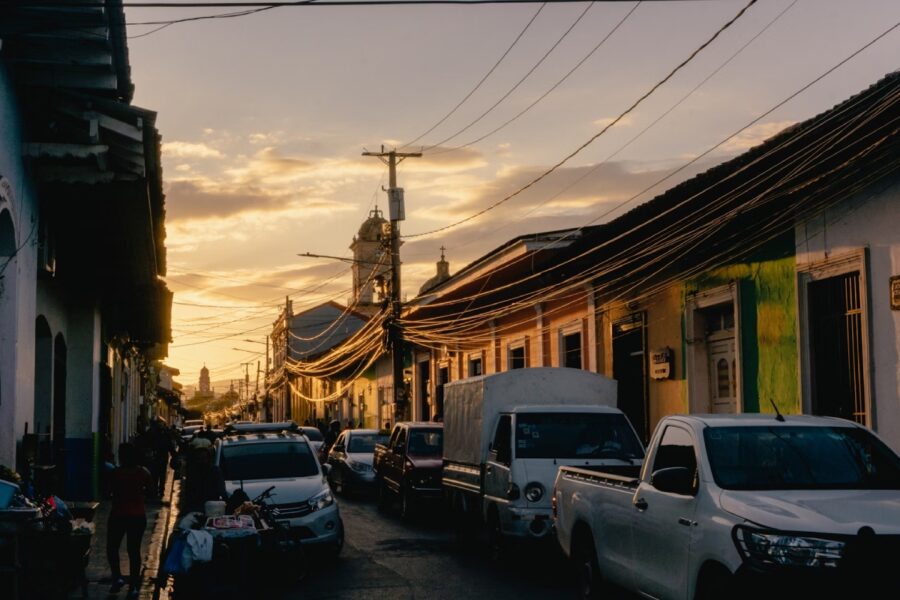
When flying into Nicaragua, you have two main options for international airports: Augusto C. Sandino International Airport (MGA) in Managua, the country’s capital, or Daniel Oduber Quirós International Airport (LIR) in Liberia, Costa Rica.
From Managua, it’s about a 2.5-hour drive to Hacienda Iguana (home to Playa Colorado and Panga Drops) and the Popoyo area. If you fly into Liberia, expect a four-hour journey, including the border crossing into Nicaragua.
- Flying with surfboards? Check out our Guide to Surfboard Bag Fees for a comprehensive breakdown of various airlines’ surfboard policies.
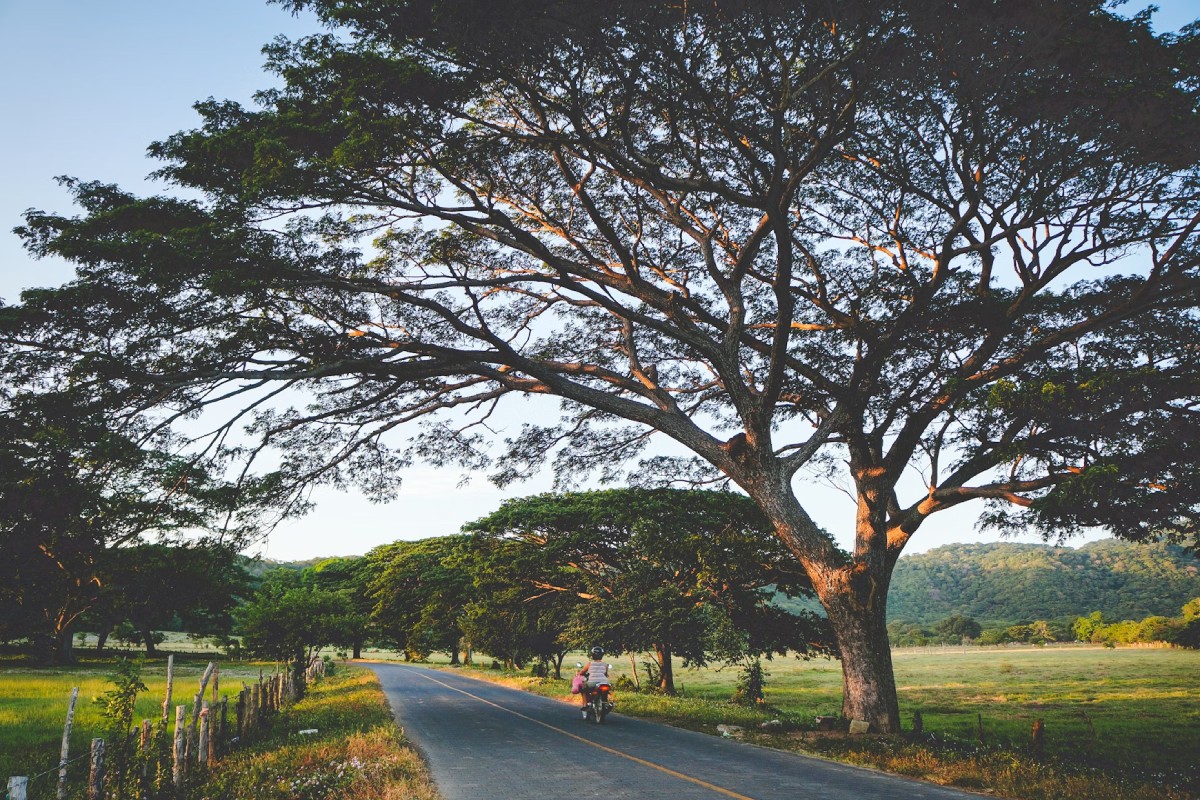
When it comes to getting around, it all depends on how much freedom and flexibility you’re after. Do you picture yourself cruising along the coast, exploring different breaks and local gems at your own pace? Or would you prefer to settle into one beautiful location and leave the logistics to someone else?
Below is a breakdown of the best transportation options to fit your style.
Pro Tip: When you book with us, we’ll coordinate all your ground transportation in advance through our trusted local partners—so everything’s taken care of before you even land.
Private Transfers
For a seamless and stress-free arrival, private transfers are the way to go. Enjoy door-to-door service in a comfortable, air-conditioned vehicle—no navigating logistics or waiting around. From the moment you land, you can sit back, relax, and take in the scenic drive to your destination with ease.
Rental Cars
For the ultimate freedom to explore at your leisure, renting a 4×4 is the way to go. While the main roads are generally well-paved, many of Nicaragua’s most legendary beaches—like Playa Popoyo and Playa Colorado—require driving down rustic access roads that can get a bit rugged, especially after rain.
Having your own vehicle allows you to chase waves, discover hidden beaches, and visit charming local villages at your own pace. Whether you’re cruising to a scenic lookout for sunset or hopping between nearby surf breaks, the flexibility is unbeatable.
Motorcycles and ATVs
If you’re looking to explore the area around your stay, a motorbike or ATV is a fun and convenient way to get around. This option is especially popular in spots like Popoyo, where you’ll find plenty of winding back roads leading to dreamy viewpoints, quiet beaches, and tucked-away local haunts.
Boat Trips
For surfers looking to reach offshore breaks or remote beaches, boat trips are a real treat. Many boutique resorts and private villas offer personalized boat charters that will whisk you off to stunning, uncrowded waves. Whether you’re after epic reef breaks or a scenic day on the water, a boat trip is not only practical—it’s part of the adventure.
Things To Do in Nicaragua
(besides surfing)
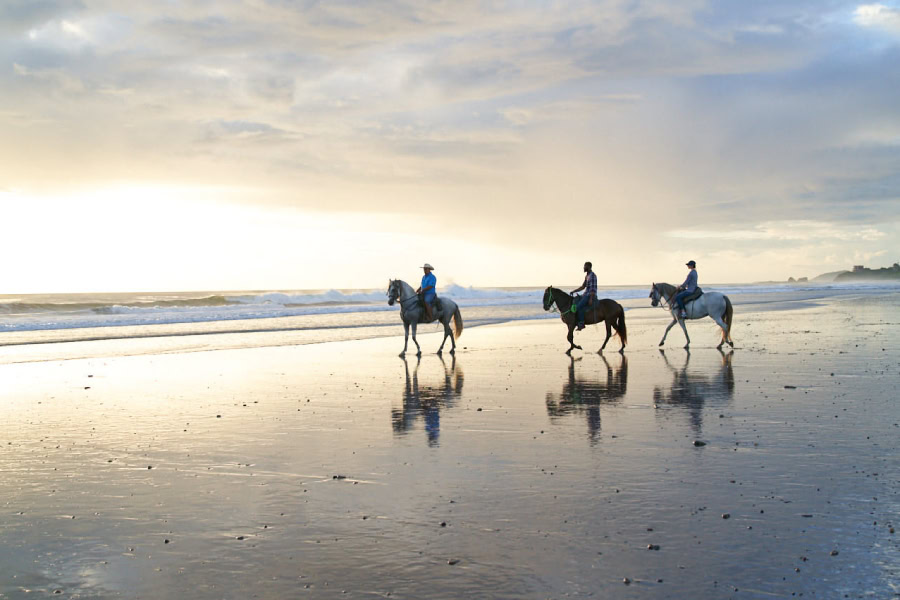
Horseback Riding
Saddle up for a scenic ride through Nicaragua’s breathtaking landscapes. Trot along pristine beaches, wander through lush forests, or meander across rolling hills, soaking in the natural beauty at every turn.
Sportfishing
Set out on a guided fishing trip to explore Nicaragua’s abundant waters. Cast your line for tuna, mahi-mahi, and other local fish while enjoying the thrill of reeling in your own fresh catch.
Golf
Spend a relaxing day on the greens at two of Nicaragua’s standout golf courses. At Hacienda Iguana, play a scenic nine-hole course that winds through lush landscapes. For a more extensive challenge, head to Guacalito de la Isla, a world-class, 18-hole course renowned for its breathtaking ocean vistas and impeccably maintained greens.
Catamaran Boat Trip
Enjoy a leisurely afternoon cruise up the coast and drop anchor at a pristine beach where you can relax and enjoy the water. Snack on a spread of gourmet, homemade dishes, desserts, and endless drinks while you sail back to take in the sunset over the ocean.
Day Trips
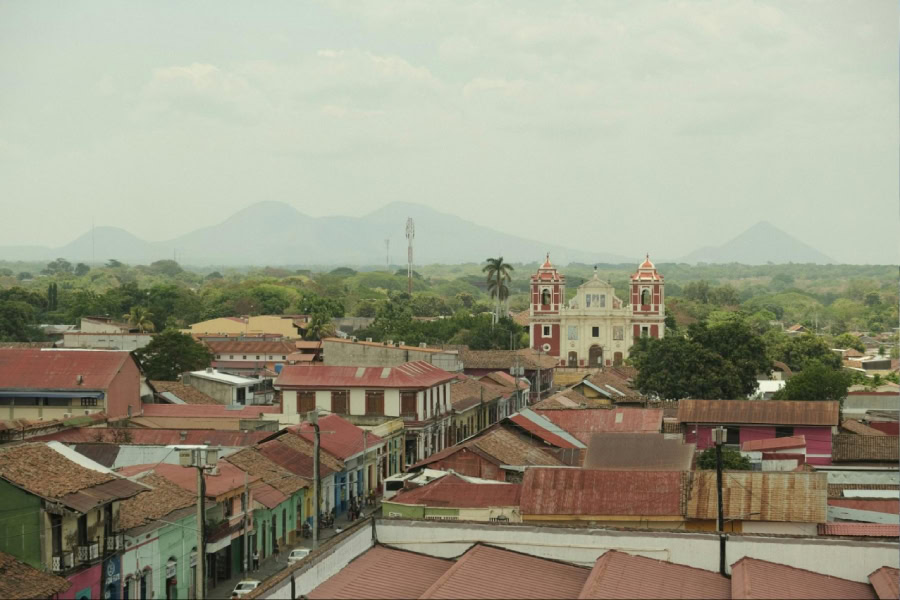
The coast may be your home base, but the surrounding region is brimming with wonders—from colorful colonial cities to dramatic volcanoes and serene crater lakes. Each destination offers a unique glimpse into Nicaragua’s diverse beauty and culture.
Granada
Step into the colonial charm of Granada, one of Nicaragua’s most colorful cities. Wander through its cobblestone streets, admire historic architecture, and explore bustling markets teeming with local crafts and vibrant culture.
Masaya Volcano
Experience the raw power of nature at Masaya Volcano, where you can gaze into the glowing lava lake of this active volcano. A thrilling sight for adventurers and a must-see for anyone visiting the region.
Laguna de Apoyo
Escape to the tranquility of Laguna de Apoyo, a stunning crater lake surrounded by lush forests. Spend your day swimming in its clear waters, kayaking along the shoreline, or simply relaxing in the serene natural beauty.
Frequently Asked Questions
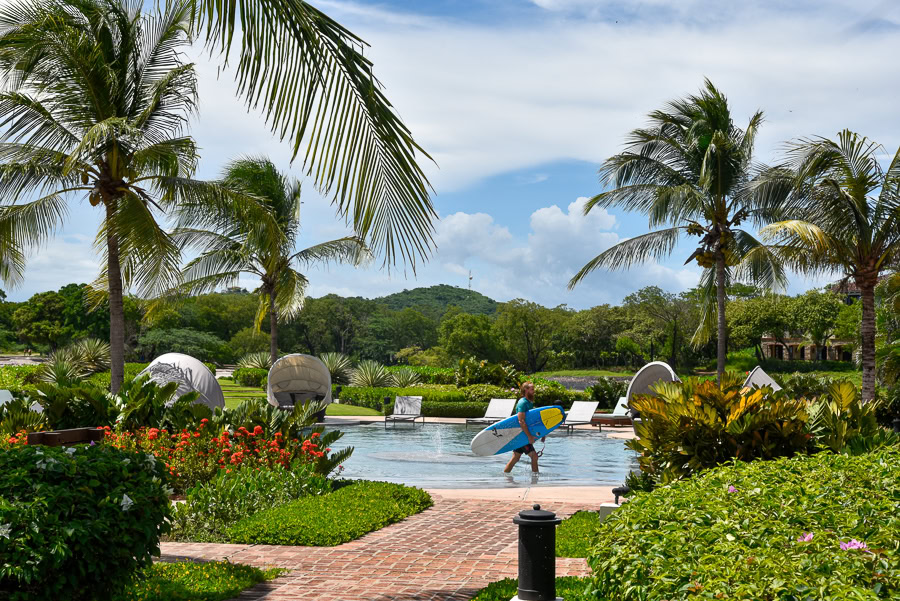
Is Nicaragua safe? Generally speaking, Nicaragua is a very safe place to visit. It is politically stable and receives lots of tourists, so the infrastructure is there for a safe trip. That being said, it’s a good idea to keep an eye on your belongings, particularly when wandering around Managua at night.
Is Nicaragua a family-friendly destination? Definitely! With lots of beginner-friendly waves, beautiful beaches, and adventure activities, this is a great place to bring the family.
What’s the best time of year to surf in Nicaragua? If you are hoping to score consistent ground swells (i.e., the biggest and best waves of the year), the main surf season stretches from April through September.
Are there options for beginner surfers in Nicaragua? For sure! There are lots of mellow beginner waves, as well as plentiful surf lessons available in the main surf hubs.
Where should I stay in Nicaragua for surfing? The entire country is fun to visit, and there are great waves all over the Pacific coast. The southern coast has offshore winds all day, while the northern part of the Pacific coast is less crowded. Get in touch with our expert surf travel planners for the top recommendations for your surf and travel style.
Travel Insurance
While we’d rather not think about getting injured while traveling, there are too many cases of people who didn’t think about insurance and get nailed with crazy medical bills after the matter.
You know the deal—better safe than sorry. Battleface or World Nomads Insurance offer very comprehensive travel insurance and cover lots of activities, including surfing and ocean sports. You can easily check them out and get a fast quote below.




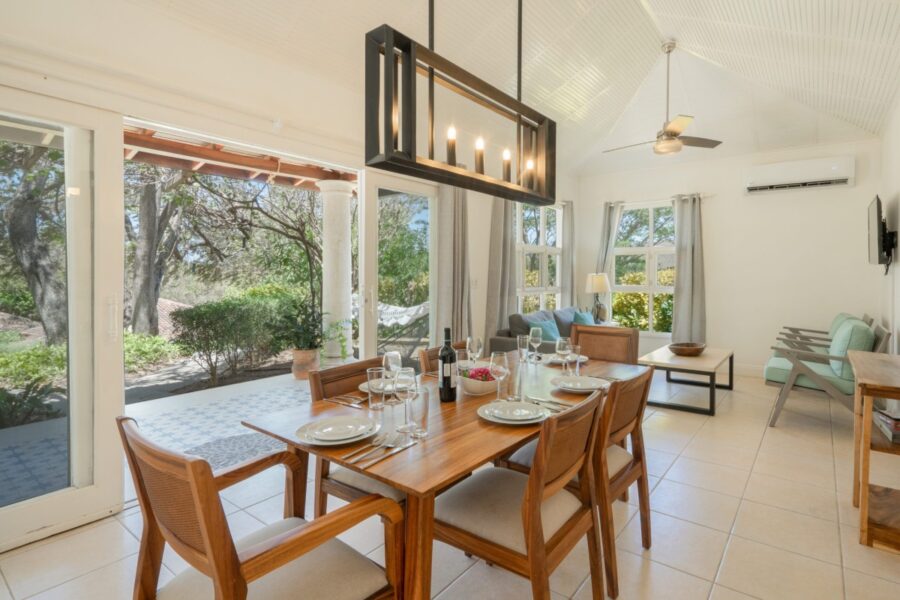
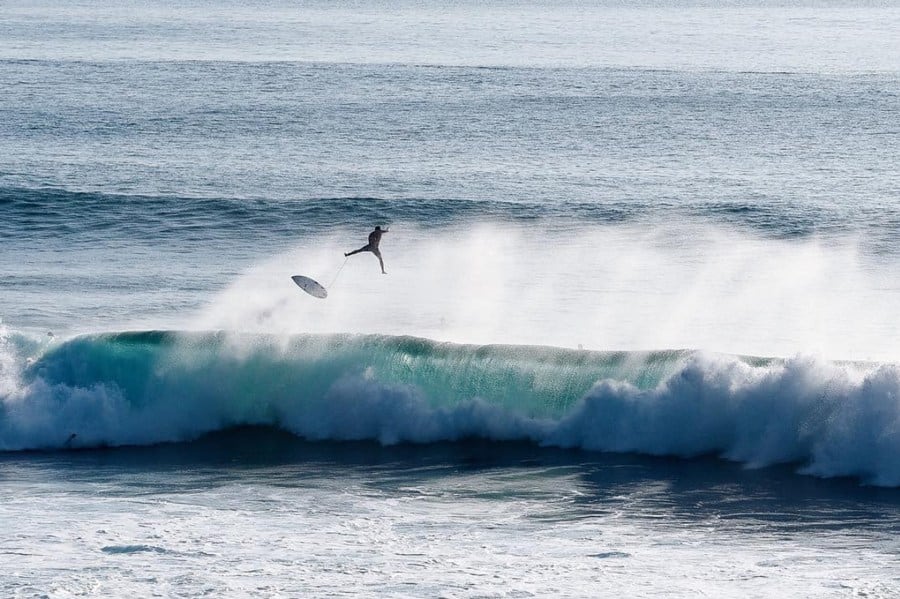

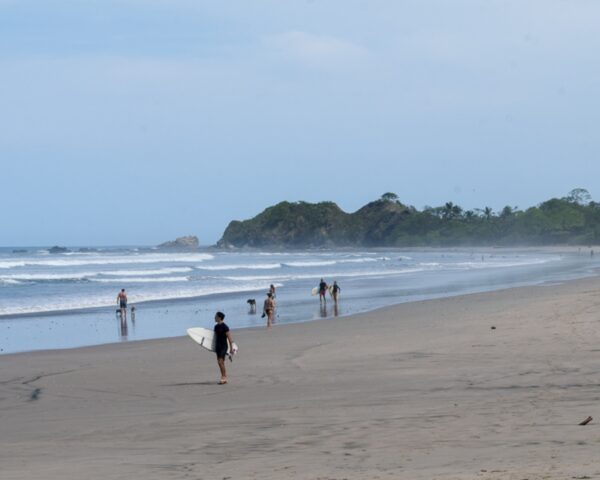


Are there any protected spots that have less heavy waves during May-September? I see swell are consistent and big. My surfing is a bit rusty and I would like to start on 3 foot waves instead of big barreling monsters. Is this possible or all spots really exposed to big waves?
HiThomas, it can vary a bit from break to break with the swell directions and exposures but if it’s big it’s likely going to be pretty solid at most of the main go-to spots. And while you can certainly try to time your trip with conditions and seasons that are more likely to be in the 3 foot range, you just won’t know until you go. While May to September is the main south swell season that gets bigger, there are plenty of days and weeks where the swell isn’t pumping. So if you can do a last minute trip in the main season you can keep an eye on reports a couple of weeks out and plan accordingly, but the best options might not have last-minute availability.Try to get there between Nov and April if possible. Cheers
HI…just looking at heading to nicaragua for a surf trip. Have a question. We would be doing things on more of a budget. from my initial research it looks like you can’t surf playa colorado if you aren’t saying at the fancy iguana resort? its a private beach/wave?? and other waves are similar? you have to hire a boat? its a bit confusing. we’d love to just park up at a more budget option and be able to surf playa colorado when its on, other waves when its not. do you know the details of this? thanks
Hey, last I was there it wasn’t a private wave. Boats of surfers would come and go. Also, not sure your budget and everyone has different perspectives on what budget and fancy means to them but from my perspective there are reasonable budget-friendly options within Hacienda Iguana. Hope you find what you’re looking for! Cheers
Popoyo and San Juan del Sur are my 2 favorite places to surf in Nicaragua! Cheap, not so developed and great waves.
Hey, what a brilliant post! Thank you very much for all the great info.
Our pleasure! Cheers
I’m planning to stay in a Nicaragua surf camp next summer after I resign from my job. I want to start traveling the world, and Nicaragua is the travel destination on my list. I like that you said April is the best time to go surfing in the country because there few tourists and the beach has good waves. I’ll keep your tip in mind and not plan a trip during the Semana Santa so I can enjoy surfing without plenty of people. Thanks!
Hey Eric & Tara, found this post super helpful, thank you. I’m a beginner surfer (of 3 days…) and have the chance to go travelling for a while in the next month and would love to go to Nicaragua.
Would you recommend anywhere in Nica that would be good (bearing in mind we’re moving into low season) for me to keep learning? If not Nica, anywhere else in Central America that would be friendly to a newbie? Thanks!
Hi Flora, I wanted to take this opportunity to let you know we’ve just recently launched a new booking service where we help our readers to find and book awesome places to stay on their surf trips at no cost to you! You can read more about it here: https://lushpalm.com/about-lush-palm-surf-club/ Yes, I’ll be happy to recommend some places in Nica and Central America. I wouldn’t worry about low season when you’re just learning to surf, there will be plenty of good waves to learn on. I’ll send you an email to discuss the details. Looking forward to connecting! Cheers, Eric
Thoughts on February for lower/middle level intermediate surfers?
Hi Rory, February could be a great time as the waves tend to be a bit smaller and tamer that time of year in Nicaragua. As opposed to during the peak season when south swells are pumping it can get quite large and hollow and pack a punch which wouldn’t be ideal for lower/middle level intermediate surfers.
Hope you have a great trip!
Hi guys, I’m planning to do a surf trip with some friends to Nica. Our principal concern is the safety. We read a lot of stuff on the web and we want to be sure if it’s already safe to travel to Nica
Hey there! Definitely understandable. We have been monitoring the situation from afar reading articles and trying to keep tabs on the latest. We haven’t personally been to Nicaragua since the crisis started, so we don’t have personal experience and obviously can’t ensure safety, but I’ll let you know what I’ve heard.
Since the crisis started, tourism has obviously gone downhill, so around 80% of small hotels have closed and unfortunately, many people have lost their jobs which is always a bad thing. I have heard that even throughout the worst times of the crisis the coastal surf areas remained pretty quiet and mellow because they are far enough away from the larger towns and cities with protests/road blocks/police presence, etc. BUT you have to travel through Managua if you fly into Nica, or alternatively, you can drive from Costa Rica, but I’m not sure the situation at the border, driving up to the surf areas, etc.
A contact of mine stayed in Nicaragua last fall and she said it was totally fine. That the surf camp she works with had closed for a few months but then reopened in the fall and are welcoming back travelers.
I think there’s no real way ‘to be sure’ it’s completely safe right now (frankly, there’s always a certain safety risk with any trip), because even if the coastal areas are mellow, there is probably some desperation with the economy tanking, etc, and there’s always a certain risk traveling in a developing country. The country is certainly still somewhat unstable, but as far as I can tell, tourists are not being targeted. Here’s the
US Dept of State Travel Advisoryon Nicaragua.
The thing that’s tricky is that countries like El Salvador have been considered more dangerous to travel to for years, yet many surfers and visitors travel through and have wonderful trips, so it’s hard to really gauge safety sometimes. At the end of the day, it’s all about your comfort level. I’d recommend doing as much research as possible and making a decision based on what you’re comfortable with.
I do know there are plenty of people traveling in Nicaragua right now, the lineups are uncrowded, and the tourism companies would definitely appreciate your business. Here is a
great thread on Trip Advisor on the question of safety. There are comments in there on both sides, but many travelers say they felt safe on their travels in Nica since the crisis began and had great trips.
Good luck with your decision, and let us know how it goes! 🙂 Happy travels!
I also spent a really good time there during my last journey and came back with great memories.
Awesome, Jenny! Glad you had a great trip!
Happy travels!